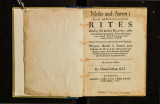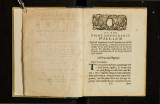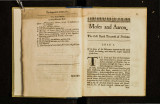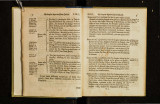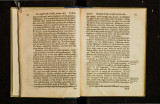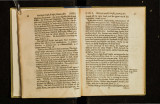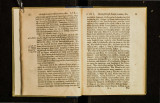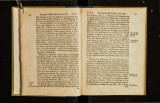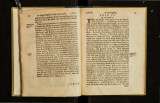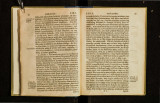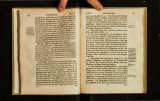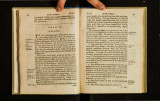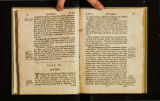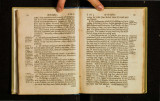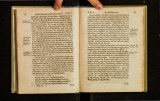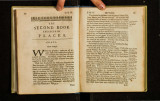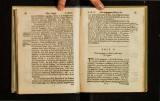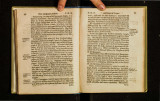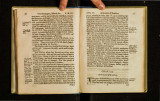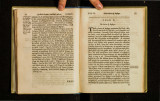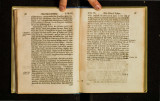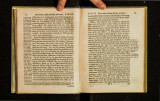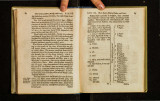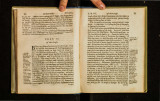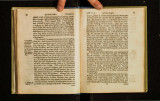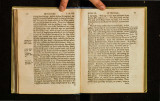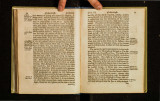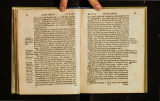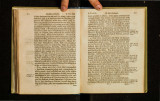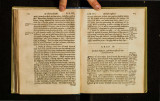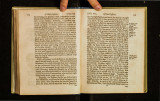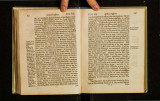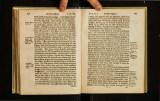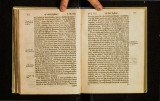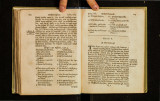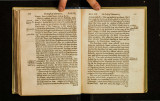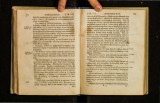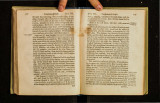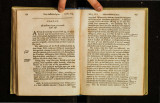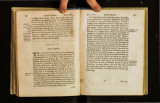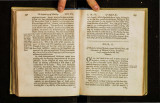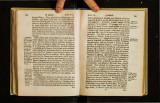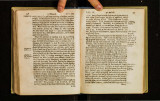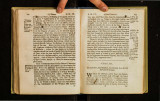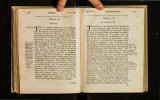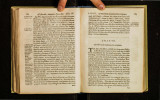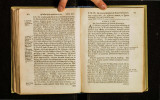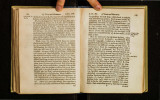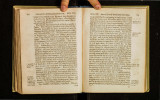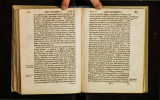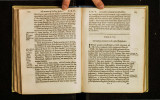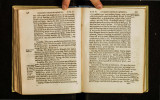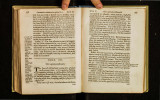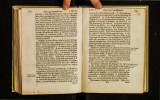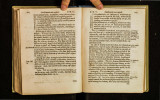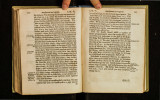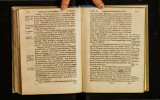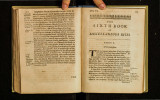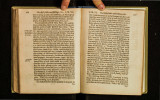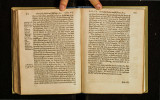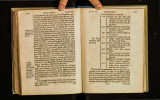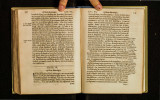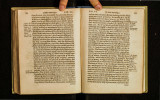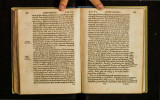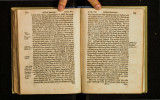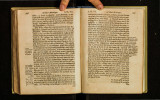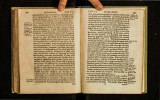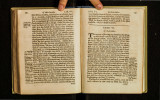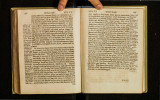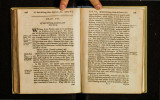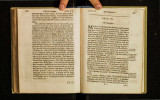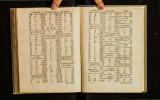| OCR Text |
Show .1-i 0 Of their Pajjiver. LiB. I I I tr1e rooms of their houfes, even to theMoufe-holes: ._ . this they did wit~ a waxen Candle, and as Buxtorf~n ScaL,g. de :· noteth upon the n1gl t before the Paffover -~ and mend. Temp. rn ' . . . r.J)tl • pralegem. Scaliger deltvereth 1t In other words to the fame pu;rpofe, . namely, that thh fearch was made~ Ineunte quart a decima, ufque t1d quart am h()ram pofl ort11mfolis .. At the beginning of the fourteenth day , until the jo~trth hour after the riftng of the Sun. Now, the beginning oft he fonrteenth day was the night going before; for the JewJ, in the ~amputation of tteir Holy.daies, counted their day from even to even. 3. There was Exterminatio, or Conjlagratio fermenti> A hurning of the leaven .; and this was done from the fourth ot the fixth hour~ about dinner- time; at which time followed the lafi degree, which Scaliger bath ommitted~namely, Execratio fermenti, the curfing of the leaven, in this t Buxtor(. S1- form: (t) Let aU that leaven, or whatfoever leavened nRg.c.u.p.3 2S thingifinmJ po~er, whether it werefeenof me, or nat feen,whether clean fed fly me~pr not clet~nfid,let aU th~t he Jcattered:,clefiroyed,and a.:counted tU the duft oft he earth. In cafe any did eat leavened bread thofe feven claies, the penalty was, that fuch a foul fuould be cut off from Jfrael, Exod, 12.15. Which penalty hath amongfi: Expofiton! a ( u) three-fold interpretation~ n Vid. P. Fa:. r. i11 Esxod. I:z• Some underHand thereby 1uch a man to be-cut off frout hh heavenly inheritance: others, that God would cut off foch from the living by an untimely death: others, that he fh.ould die without children, leaving no pofterity behind him: To this purpofe their Proverb is, wxV~id . P. Fat, (x)A man childleuiJJ is li~Ffei[·e~Jfs . Or thefe three, the rfl: is molt probable in this place, though the fame Text m:Jy admit ~he fecond interpretation in other places of Scripture, as is de· ~;l.ared in the Chapter of Circumcifion~ No.twith- Lta.nd· L I Be I I I. Of their P11jfover. Handing here let 1he judicious Reader determine,"· whether thefe words do not imply, befides the fecret actions of God touching the foul of fuch a-De .. linquent, a direCtion unto the ehurch how to deal with parries thus off:-nding ~by cenfur1ng them wit hEX'· communication ; which k1nd ofcenfureelfewhere the Scripture calleth, A c~fiing ~Ht of the SJnAgogue , John 16.2. A fpe~ch much ltke thts,A cutting oiffrom ljrttel. I t Three t_h1ngs may be here demanded. Fir ft., who k illed the Pafchal Lamb? Secondly, where it was - killed? Third I y ~ where it was eaten? Firft, it was killed by the Prie.fls:) 2 chron. 35. 6. Secondly,. it \VaS killed aft.et the fir(~ time in the Co1trt of the Temple, the place whtch God had chofen, J?eut. 16.6. ())Thirdly y Maimon. in the ?"Ynhe~ of thhe Laimb t 1 ook It of theh ~~eft, and did ~';~:.r<f"h· eat tt 1c1 ts own ou e at erufal~m" C rb,. with his dif-ctples k!pt the P ajfover in an upper-chamber·atJerufalenJ. It may further be demanded, whether the P-afi!: ov~r. confified of two fuppe~ s~ o_ne immediately fucceedtng the other ~ Some affirm It, and their reafons are thefe: Firfi, f:.1y they, the .Pa.!fo·ver was eaten _ftanding, but Chl'ift ufed another gefiure. This argu. ment of all other is the weak eft, for chr.ifl .ufed the geHure of lying on his body, as well in the eating of the Pajfover, as at the confecration of the Sacrttment, and the Jew;, generally after the firfi: infiitution in ·all their Paifover.s , ufed rather this pofiure ofd~eir body, than the other of ftanding, in t0ken of refr an-d fecurity, as nppeareth in the chapter ofFeaft.s. Se- , condly, they fay, the P afchal Et~mb wa~ wont to be rolled; but in the 1afl: P ajfover which opr Savimtr.celebrated., there was ]#J cui inting\ebatur pan_k, Broth i-11to -which he dipped the bread. This reafon is as weak as the former,. becaufe though ther.e was a command t O. |




